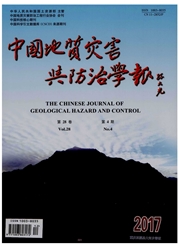

 中文摘要:
中文摘要:
2010年8月7日晚23:00左右,甘肃省甘南藏族自治州舟曲县罗家峪、三眼峪流域突然降强暴雨,在三眼峪支流和罗家峪上游形成洪流,降雨持续40min后,在两泥石流沟谷中形成特大泥石流灾害。由于其特有的峰尖谷深地形、坡体表面丰富的松散物质本质条件,在多雨季节降强暴雨诱发了本次泥石流的产生。本文从泥石流形成的潜在性、泥石流降雨诱发因素、城建开发不合理三方面分析了此次泥石流灾难的形成原因。作为泥石流频发区,可采取监测预报,加强管理以遏制人类活动,实施工程治理的综合方法减少和避免灾情的发生。
 英文摘要:
英文摘要:
In the evening of 2010. 8.7 at 23:00, there fell intense storm unexpectedly in Sanyanyu valley and Luojiayu Valley of Zhouqu County, Tibetan Autonomous Prefecture of Gannan, Gansu Province. There were two flood currents formed at Sanyanyu tributary and Luojiayu upper reaches. After 40 minutes, catastrophic debris disasters were formed in the two debris valleys. Because of the specific pointed mountain peak and deep valley terrain, additionally abundant loose matters at the surface of side slope, dropping intense storm in rainy season induced the occurrence of this debris. This paper analyses the forming causes of this debris flow from the potentiality of the debris valley's formation, the rainfall inducing factor of debris flow and the unreasonable construction and development of urban. As debris frequent happen area, we can take monitoring and prediction measure, reinforce the management to restrain human activities, and implement engineering treatment synthetically method which can decrease and avoid the occurrence of the condition of disaster.
 同期刊论文项目
同期刊论文项目
 同项目期刊论文
同项目期刊论文
 期刊信息
期刊信息
